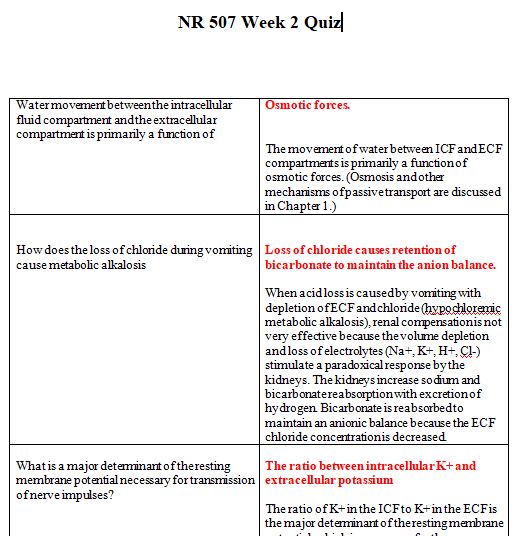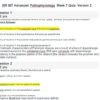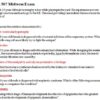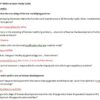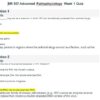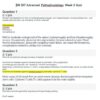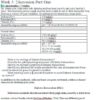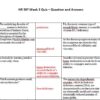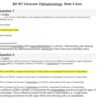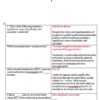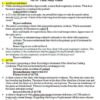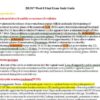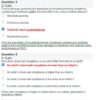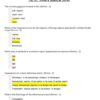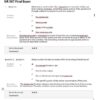Description
NR 507 Week 2 Quiz – Questions and Answers with Explanation
- Water movement between the intracellular fluid compartment and the extracellular compartment is primarily a function of
- How does the loss of chloride during vomiting cause metabolic alkalosis
- What is a major determinant of the resting membrane potential necessary for transmission of nerve impulses?
- Why are infants susceptible to significant losses in total body water (TBW)?
- At the arterial end of capillaries, fluid moves from the intravascular space into the interstitial space because the
- When thirst is experienced, how are osmoreceptors activated?
- Physiologic pH is maintained around 7.4 because bicarbonate (HCO3) and carbonic acid (H2CO3) exist in a ratio of
- Pulmonary edema usually begins at a pulmonary capillary wedge pressure or left atrial pressure of _____ mm Hg.
- _____ is a fulminant form of respiratory failure … by acute lung inflammation and diffuse alveolocapillary injury.
- Dyspnea is not a result of
- In tuberculosis, the body walls off the bacilli in a tubercle by stimulating
- Clinical manifestations of pulmonary hypertension include
- Clinical manifestations that include unexplained weight loss, dyspnea on exertion, use of accessory muscles, and tachypnea with prolonged expiration are indicative of
- In ARDS, alveoli and respiratory bronchioles fill with fluid as a result of the nr 507 week 2 quiz
- High altitudes may produce hypoxemia through
- Which inflammatory mediators are produced in asthma?
- Which pleural abnormality involves a site of pleural rupture that act as a one-way valve, permitting air to enter on inspiration but preventing its escape by closing during expiration?
- The most successful treatment for chronic asthma begins with
- What is the primary cause of RDS of the newborn
- An accurate description of childhood asthma is that it is a(n)
- The release of fibroblast growth factors affects ARDS by causing
- Which immunoglobulin is present in childhood asthma?
- Which of the following statements about the advances in the treatment of RDS of the newborn is incorrect?
- Cystic fibrosis (CF) is ….by a(n)
- Which of the following types of croup is most common?
- Chest wall compliance in infants is _____ in adults.
- Chvostek sign and Trousseau sign indicate
- Which are indications of dehydration?
- In hyperkalemia, cardiac rhythm changes are a direct result of
- Which of the following is a true statement?
- Which enzyme is … by the juxtaglomerular cells of the kidney when circulating blood volume is …..?
- A(n) _____ is a circumscribed area of suppuration and destruction of lung parenchyma.
- Kussmaul respirations may … characterized as a respiratory pattern

